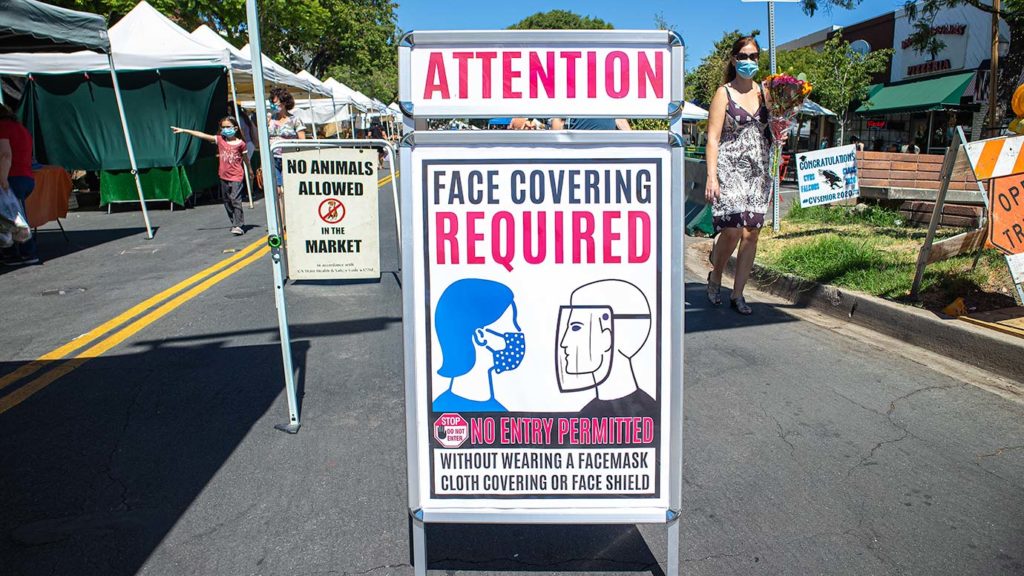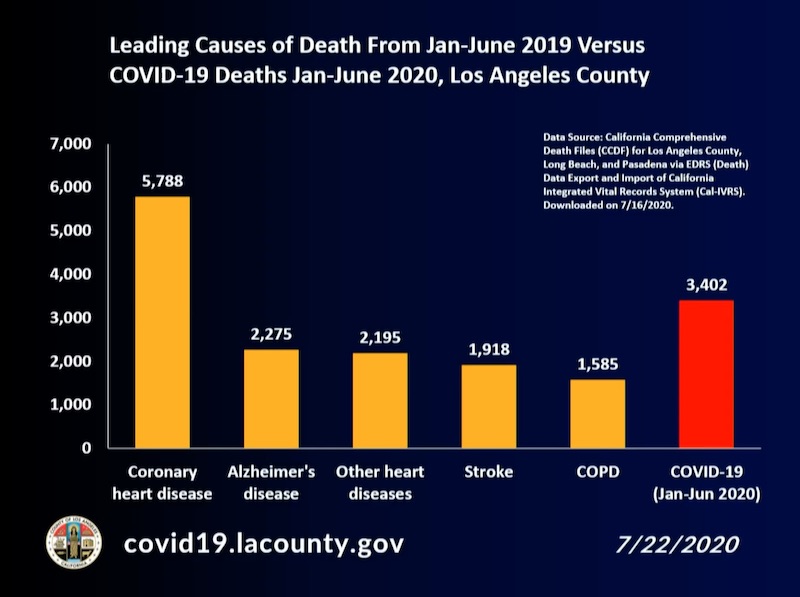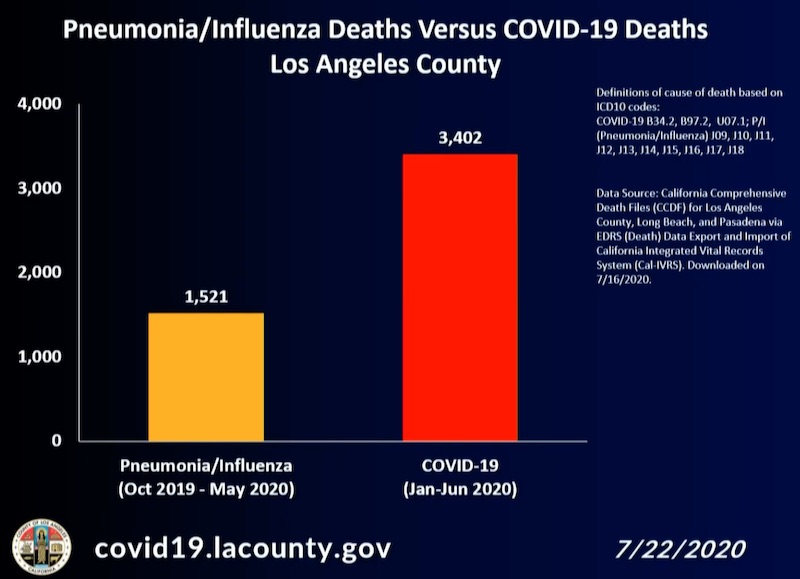
Today, L.A. County Public Health Director Dr. Barbara Ferrer presented data that shows COVID-19 is not only deadlier than influenza, but on track to become one of the leading causes of death in Los Angeles County. The county also reported 3,266 new cases and 64 deaths today.
Below, you can see data on deaths from January through June of 2019, the most recent complete data the county has available. Coronary heart disease was the leading cause of death, accounting for nearly 6,000 deaths in the first six months of 2019. By comparison, COVID-19 is represented by the red bar, which shows 3,402 deaths through June. That number is now higher: 4,213 deaths.

“While this isn’t a perfect comparison because this year’s data for other leading causes of death has not been finalized, it does appear that COVID-19 is on track to claim more lives in L.A. County than any disease except coronary heart disease,” Ferrer said.
That includes Alzheimer’s, stroke, other heart diseases, and chronic obstructive pulmonary disease (COPD).
The next slide shows us two things, Ferrer said. “One is that flu is a dangerous virus in its own right, but that it’s also nowhere near as deadly as COVID-19 has been to-date.”
The yellow bar shows deaths due to flu and pneumonia between October 2019 and May 2020, or, flu season. In those eight months, 1,521 people died. Comparatively, in just the first six months of 2020, COVID-19 has killed more than twice as many people.

There is a vaccine for the flu, which health officials say you should definitely get come flu season. But there’s currently no vaccine for COVID-19, which is why it’s important to flatten the curve and limit hospitalizations, as hospitals will need to care for both patients with COVID-19 and the flu this flu season.
Cases and hospitalizations have both been on the rise lately, with 60% of new cases occurring among younger adults, while seniors continue to represent a majority—75%—of deaths. Children and youth have seen a 50% increase in hospitalizations from June 14-18, followed by a 29.7% increase among adults 18-40 and a 33.5% increase among adults 41-65.
COVID-19 also continues to disproportionately affect people of color and low-income residents, which Ferrer attributed to both systemic racism and the fact that these individuals are most likely to be essential workers.
Ferrer said she hopes this week will be “a turning point” that shows our return to stay-at-home behavior has worked. And as always, health experts advise you wash your hands, wear your mask, avoid crowds and confined spaces, practice physical distancing, and don’t gather with people outside your household.


